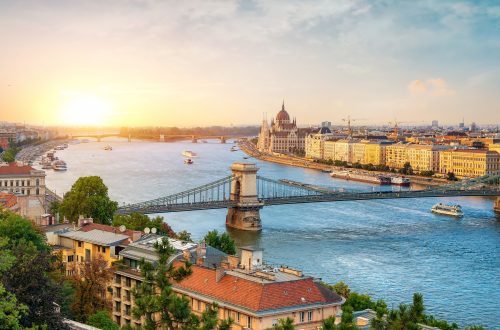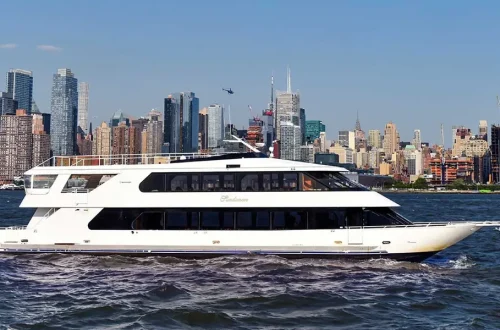Cruising through the Caribbean is an experience like no other. With the sun on your face, the ocean breeze in your hair, and a drink in hand, it’s easy to get swept up in the relaxed rhythm of sea life. But for many travelers, the real magic lies in the ports of call—especially the smaller islands that often get overshadowed by their larger, more commercialized neighbors. These hidden gems offer a unique glimpse into local culture, untouched nature, and authentic experiences. To help you make the most of these stops, here’s how to truly savor your time on smaller islands during your cruise adventure.
Do Your Homework Before You Sail
Smaller islands may not have the flashy marketing presence of major destinations like St. Thomas or Aruba, but that doesn’t mean they’re short on appeal. In fact, their relative obscurity is often what makes them special. Before your cruise departs, take some time to research each port on your itinerary. This is especially important for Southern Caribbean cruises, which often include stops at lesser-known islands like Dominica, Bequia, or Terre-de-Haut in Les Saintes. Each island has its own charm, history, and unique offerings.
Look for local blogs, cruise forums, or tourism websites to get a feel for what each island is known for. Is there a waterfall hike worth the effort? A secluded beach only reachable by water taxi? A family-run restaurant serving up legendary seafood? Knowing these details in advance ensures you won’t waste time once you’re on land.
Book Smaller, Local Excursions
When you step off the ship, you’ll likely be bombarded with excursion options—from snorkeling adventures to historical tours. While booking through your cruise line is convenient, it’s often more rewarding to opt for locally-run experiences. These excursions tend to be more personalized, less crowded, and directly support the island’s economy.
Smaller islands are typically easier to navigate, which means you don’t necessarily need a large tour company to see the highlights. Consider joining a local walking tour, hiring a private guide, or even just chatting with a local taxi driver about custom tour options. They often know the best off-the-beaten-path spots that larger tours simply can’t access.
Embrace Island Time
Cruise schedules can be tight, with limited hours to explore each destination. But don’t let the ticking clock rob you of the chance to truly relax. Smaller islands operate on what’s often called “island time”—a laid-back approach to life where things move slower and stress is kept to a minimum.
Instead of rushing to see everything, focus on soaking up the atmosphere. Spend 20 minutes chatting with a market vendor, or linger a little longer over a local dish at a beachside shack. These moments, often unplanned, become the memories that linger longest after the cruise ends.
Try Local Cuisine
Smaller islands often have a strong culinary identity, shaped by generations of tradition and fresh, local ingredients. Skip the chain restaurants or international menus and dive into what the locals eat. Whether it’s a spicy goat curry in St. Kitts, grilled lobster in Grenada, or a bowl of callaloo soup in St. Lucia, food is one of the most direct ways to connect with a place and its people.
If you’re short on time, seek out the island’s central market or a popular food truck. Not only are these options usually more affordable, but they also provide an authentic taste of daily life.
Pack Smart and Light for Each Port
It may seem obvious, but packing appropriately for each island stop can make or break your experience. Smaller islands may have limited infrastructure, meaning that you won’t find easily accessible amenities if you forget something important. A lightweight backpack stocked with essentials—water, reef-safe sunscreen, insect repellent, a towel, and some local currency—is your best bet.
If you plan on hiking or exploring remote areas, bring sturdy walking shoes or sandals with good grip. A waterproof bag for electronics and a change of clothes can also be invaluable, especially if you’re engaging in water-based activities like kayaking or snorkeling.
Respect the Environment and Culture
One of the greatest advantages of visiting smaller islands is their relative untouched beauty. But with that privilege comes responsibility. These communities often rely heavily on tourism, yet may lack the resources to manage large crowds. Be mindful of your footprint. Avoid single-use plastics, don’t remove shells or coral from the beach, and stay on marked trails when exploring natural areas.
Culturally, smaller islands tend to be more traditional and community-oriented. Dress modestly when walking through towns, ask before taking photos of people, and show respect for local customs. A little cultural sensitivity goes a long way in fostering positive interactions.
Leave Room for Serendipity
Sometimes the best experiences aren’t planned. Maybe it’s stumbling upon a hidden beach with no one else around. Maybe it’s being invited to a local music performance or craft fair that wasn’t advertised anywhere. Smaller islands are full of surprises, and the limited time you have can still allow for spontaneous magic if you don’t over-schedule yourself.
While it’s smart to have a loose plan, leave room for the unexpected. That unplanned detour could turn out to be the highlight of your entire trip.
Capture Memories, Not Just Photos
In our social media-driven world, it’s easy to view each stop as a photo op. But the essence of these small islands is best appreciated when you’re truly present. Take photos, of course—but also take time to just sit quietly and soak it all in. Listen to the waves, smell the salt air, watch local children play soccer in the street. These are the moments that can’t be captured on camera, but they’re the ones you’ll carry with you long after the cruise is over.
Final Thoughts
Smaller islands on a cruise itinerary often offer the most authentic and memorable experiences, especially on routes like those found in the Southern Caribbean. While they may not boast sprawling resorts or mega attractions, they make up for it with charm, culture, and natural beauty. With a bit of planning, an open mind, and a willingness to slow down, you can make the most of your limited time on these hidden gems—and leave with stories worth sharing for years to come.




